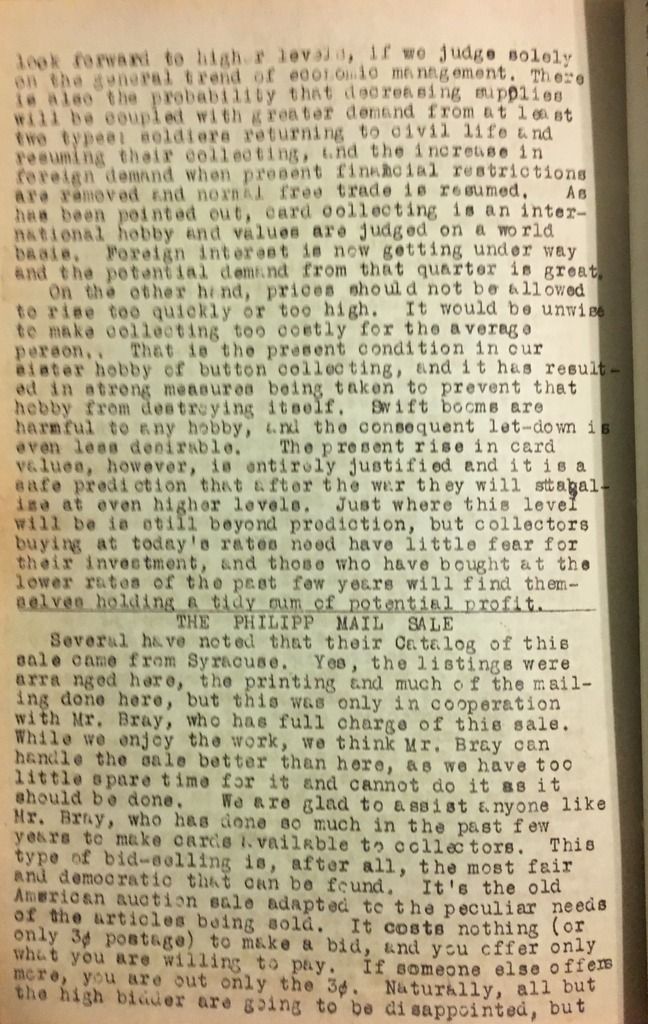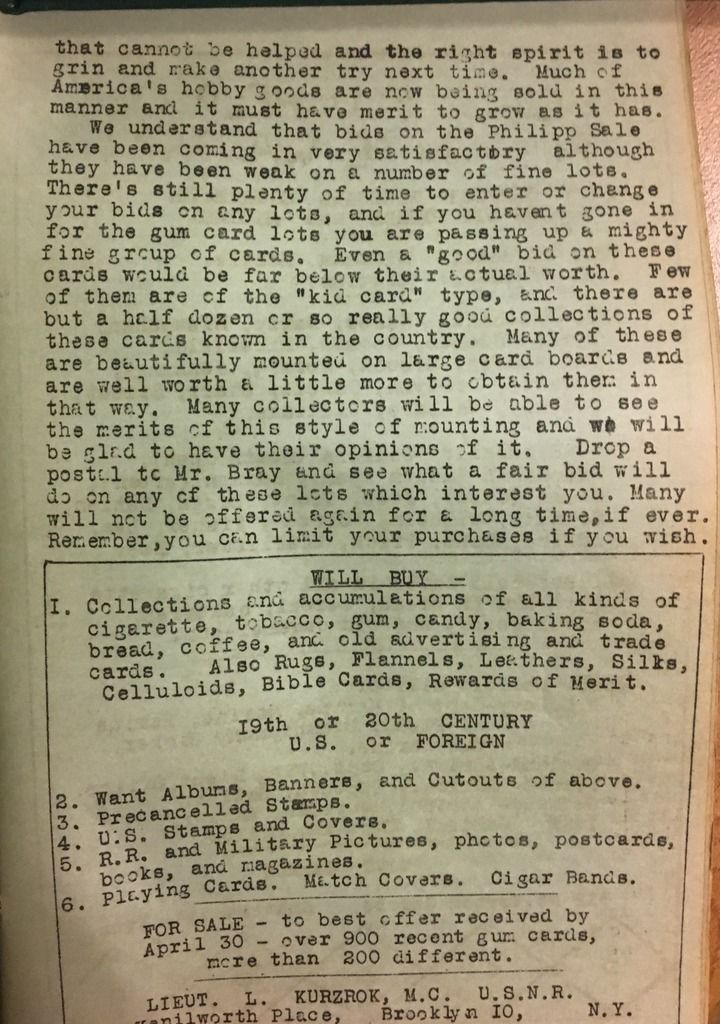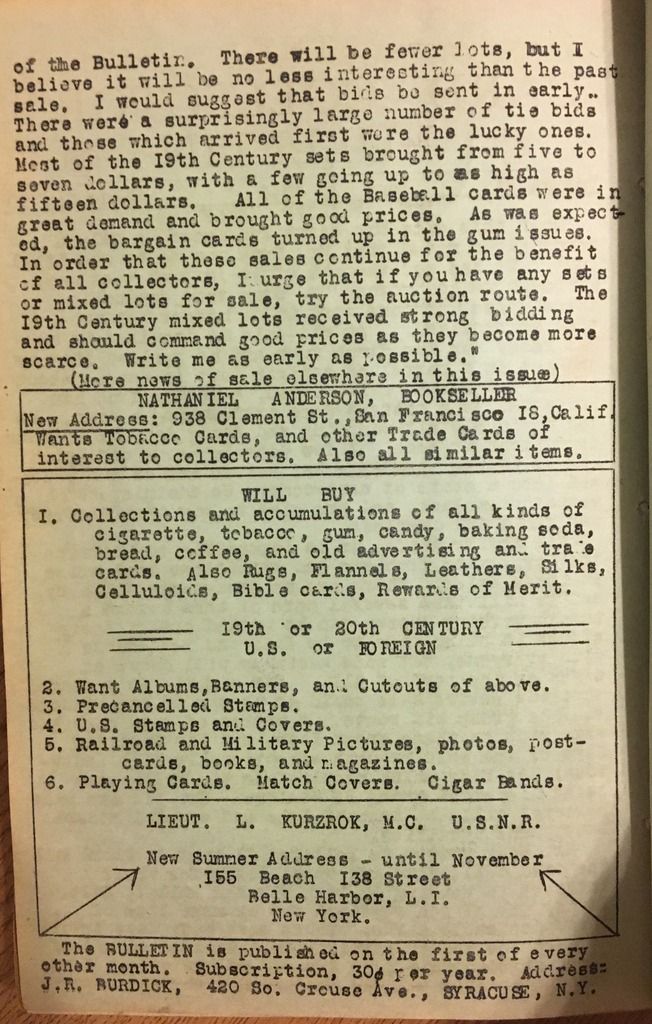After the U.S. entered World War II at the end of 1941, there was a boom in the prices of tobacco cards and other old collectible cards. That seems counterintuitive at first, but it makes sense if you think about it. There were no new cards being produced because of the war, and war rationing restricted what people could spend on food, gasoline, and other necessities. Jefferson Burdick had just recently organized the hobby, so that collectors could more easily contact each other in order to buy and sell, and due to the above-mentioned rationing, many of them presumably had money to spend on cards.
Burdick took note of the rising prices in the pages of The Card Collector's Bulletin, as in the following article from the December 1, 1942 edition (#21). He notes that four collections had sold for $70 or more (!) in the previous year, including one that went for a whopping $150 (over $2000 in today's dollars), and that an album of cards had sold at a public auction in New York City for $62, some 40% above the book value of the cards (and equivalent to $900 in today's dollars). After discussing the current prices of various types of cards, Burdick makes the remarkable statement that "In these days much is heard of the investment potential of hobby material", and that "Any good collection if properly handled should eventually realize as good returns as the better stocks and bonds."

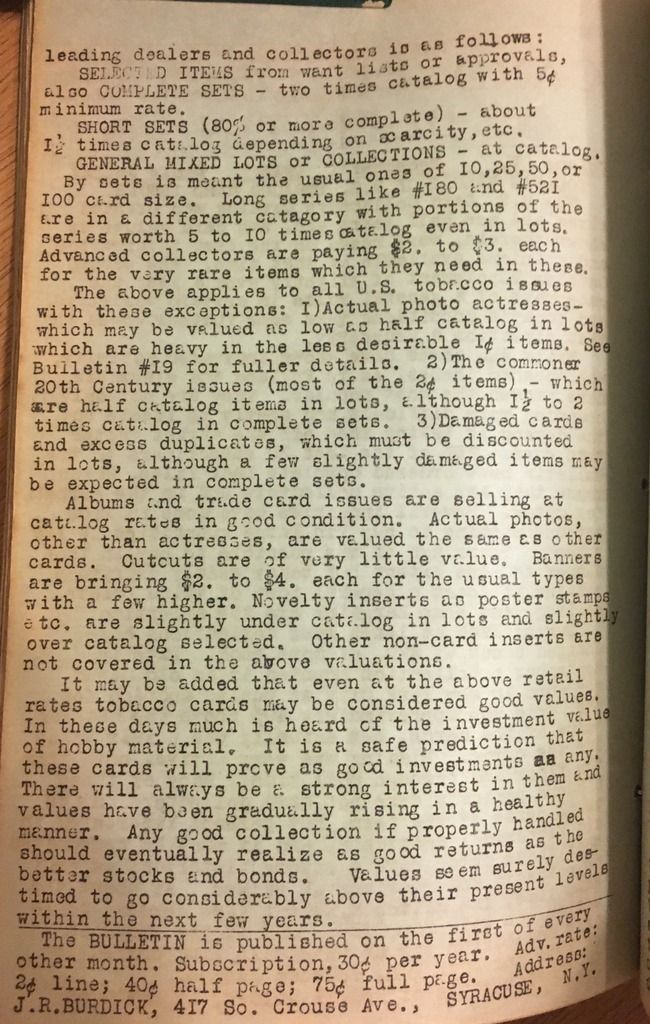
Four months later, in the April 1, 1943 issue (#23), Burdick notes that stamp dealer Elmer R. Long of Harrisburg, Pennsylvania had included several lots of cigarette cards in his recent auction, and that John D. Wagner (whose copy of CCB this was) reported that they went for more than book value. Since Wagner, like Lionel Carter, was a baseball card collector, presumably at least some of the lots auctioned off by Long were baseball, probably T206s, T205s, and other common sets.

Given these trends, it was only a matter of time before somebody decided to do an auction consisting just of tobacco cards and similar material. A few months later, the first such auction came about after the death of veteran collector James N. Colkitt of Los Angeles. Colkitt regularly bought ads in Card Collector's Bulletin, one of which is at the bottom of the above page with the item about the auction. Leon's collection of the hobby letters of John D. Wagner (posted in this thread:
http://net54baseball.com/showthread.php?t=207944) includes a 1939 letter from Colkitt to Wagner, which he posted last year (here:
http://net54baseball.com/showpost.ph...7&postcount=30). Colkitt had started collecting tobacco cards as a child in the 1880s and never stopped, so that he still had all his cards in the early 1940s. He was an early subscriber to Card Collector's Bulletin and corresponded with Burdick. In the April 1, 1942 issue (#17), Burdick reported (below) on how Colkitt was mounting his collection in albums with clear tubes held to the pages with Nu-Ace corners. The second page below is from the August 1, 1942 issue (#19), in which Burdick reports that Colkitt still has one of his card wantlists made on July 27, 1897, and that he had started making wantlists as early as 1891.

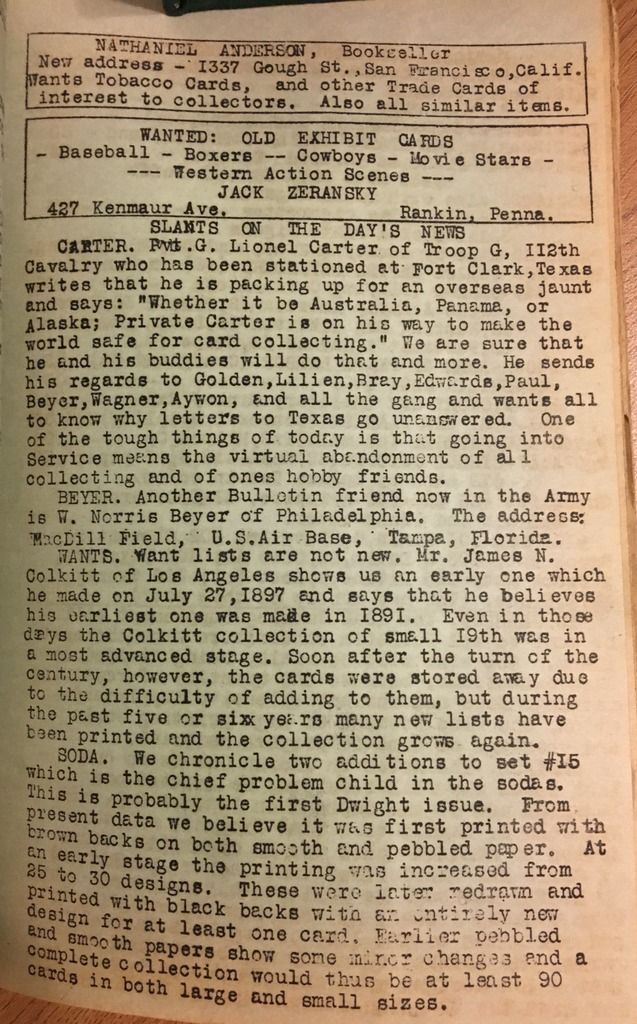
Colkitt died on June 30, 1943, and Burdick wrote a brief obituary for him in the August 1, 1943 Card Collector's Bulletin (#25), shown below. In the following issue (October 1, 1943), Burdick announced in a front-page story that "The James N. Colkitt Collection" was going to be sold by "mail sale" (actually a mail auction), in accordance with Colkitt's wishes. Burdick divided the collection into 71 lots and described them in a separate catalog, which I unfortunately don't have. If anybody out there does have this catalog or knows somebody who does, I'd be very interested in seeing it. It was the first auction catalog for cards, distributed as a supplement to Card Collector's Bulletin (and also separately to other interested parties, apparently).
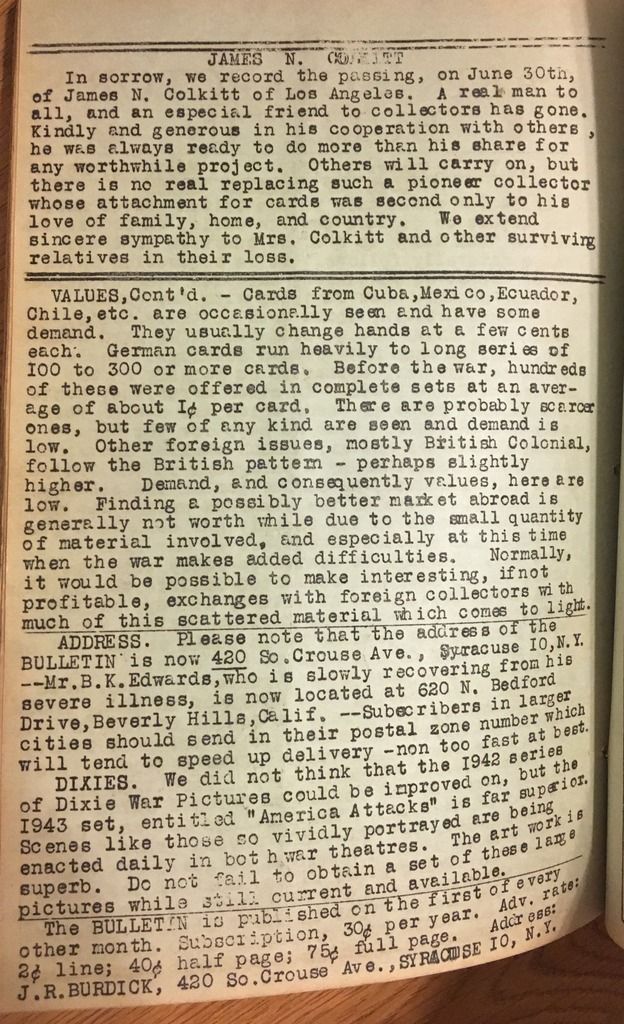
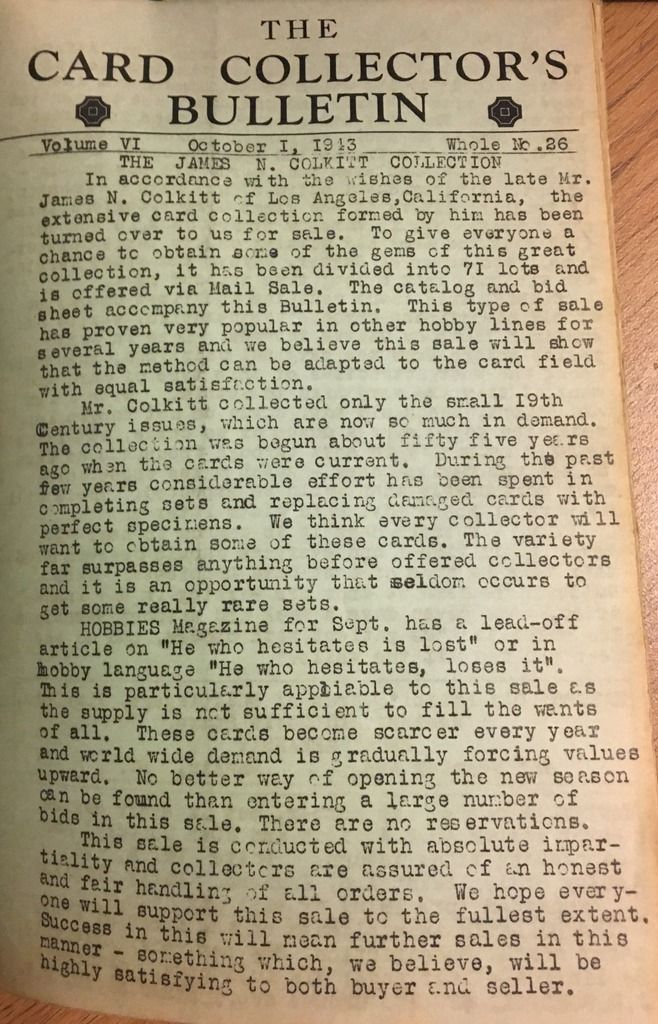
In the December 1, 1943 CCB, Burdick reported that, based on preliminary results, the Colkitt auction had exceeded all expectations, grossing about 75% more than catalog value (which he correctly interpreted as meaning that the "catalog" values were too low). Among the lots that he reported attracting the strongest interest were lots 50 and 52, Goodwin Champions (N162) and Ballplayers (presumably Old Judges).

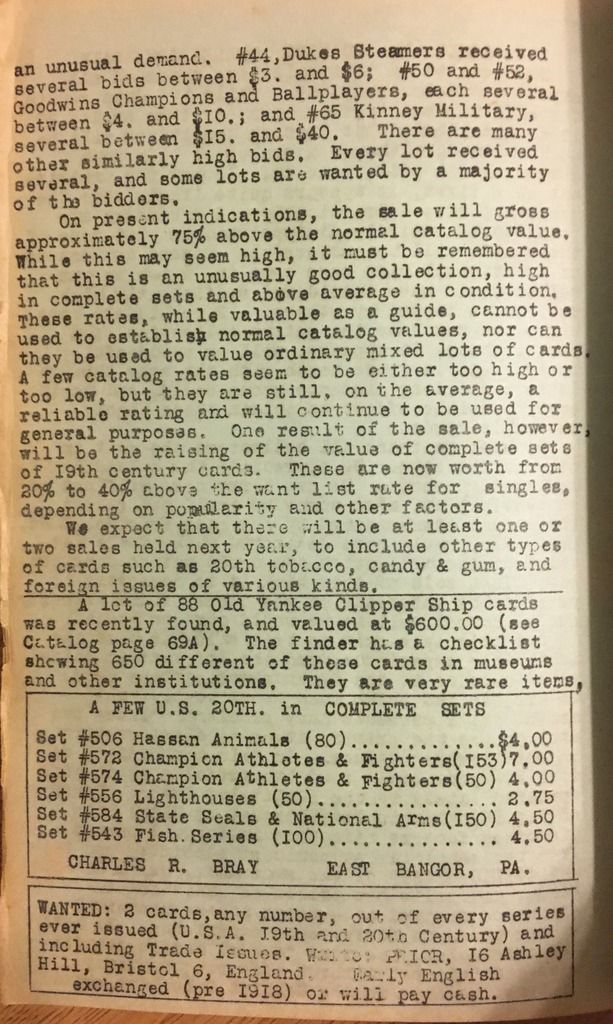
In the February 1, 1944 issue of CCB, Burdick reported that a single bidder had won all of the lots in the Colkitt sale for a little over $400 (around $5600 in today's dollars). He discusses the rules of the auction, which some people had misunderstood, and gives some advice for bidders in future auctions -- find out what the high bid is near the end of the auction, then top it. So I guess Jefferson Burdick was the first sniper.

Burdick also announced that the next auction would come from the collection of Alfred O. Phillipp, who was getting out of collecting, and would be conducted by Charles Bray.
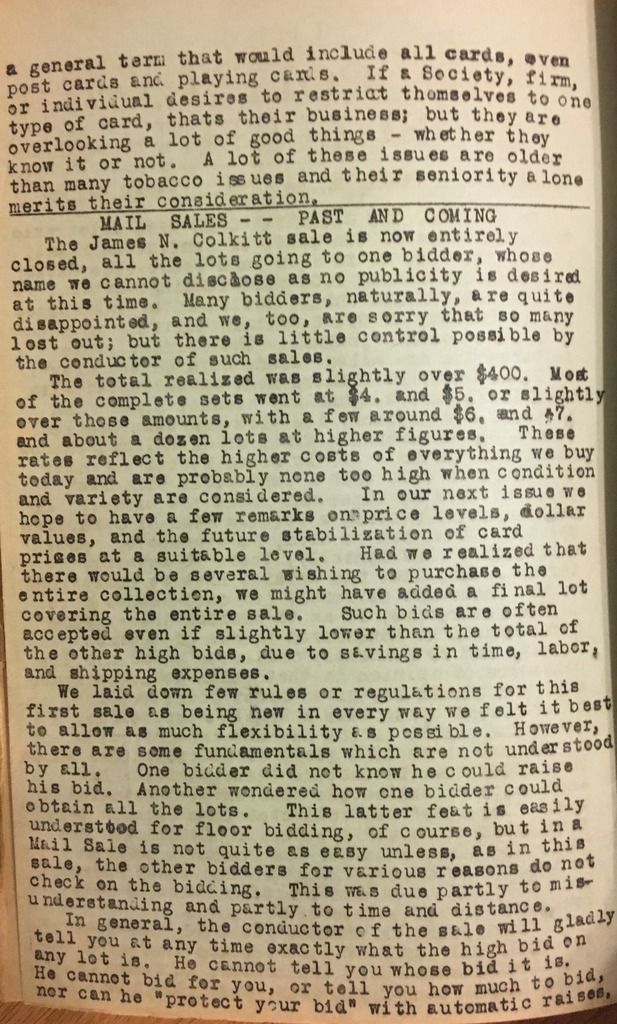
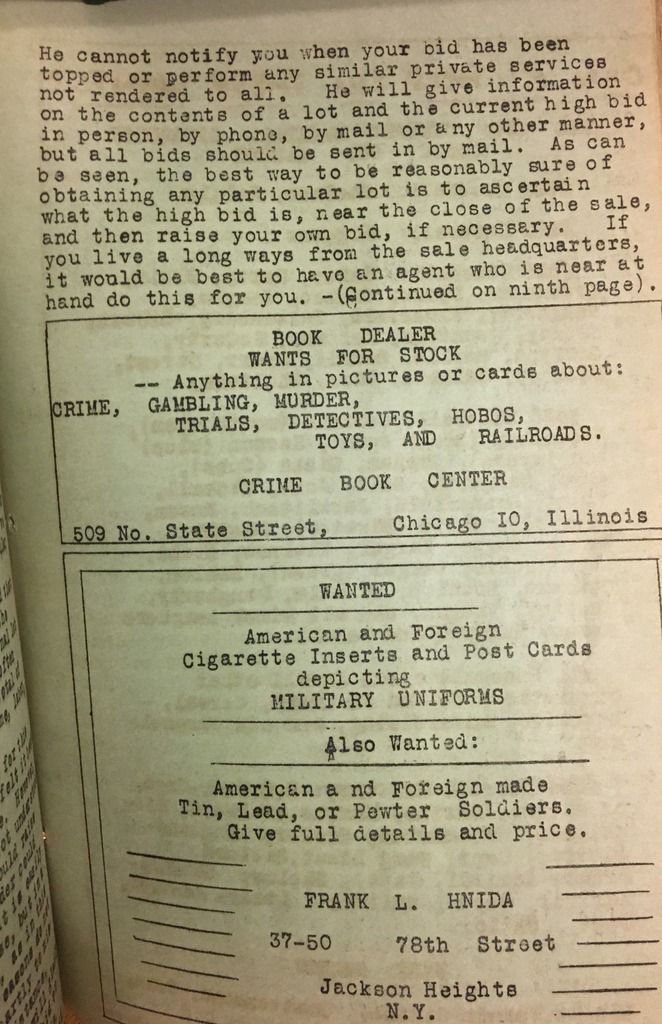
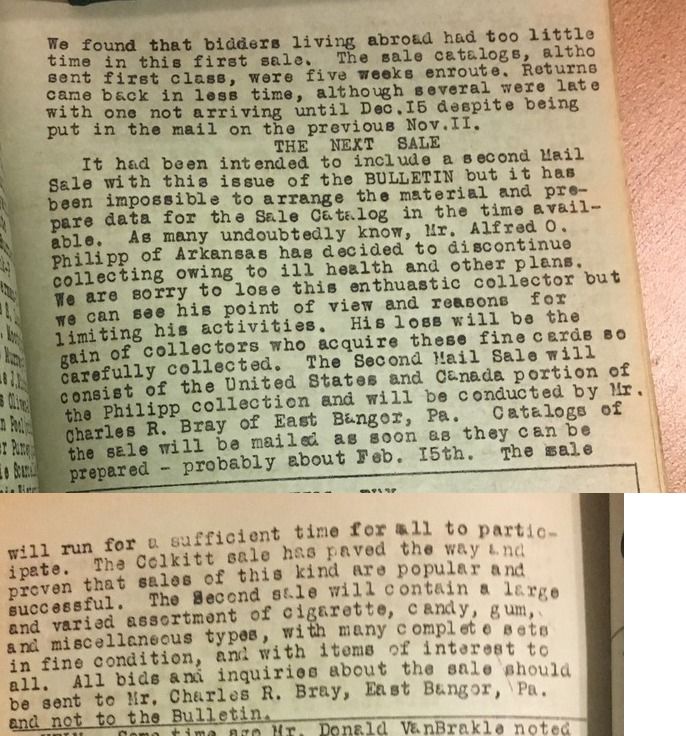
The first article below, from the April 1, 1944 CCB, is Burdick's preliminary report on the Phillipp auction, which was still ongoing. The next articles, from the June 1, 1944 CCB (#30), report on the results of that sale. Burdick reports that 21 different bidders won lots, and that the baseball cards brought very good prices. Bray, in a separate article, says that there are still unsold lots that people can bid on. He needed to "clear the decks" for the next sale. Bray would continue to conduct card auctions in Card Collector's Bulletin for the next 40 years, until sometime in 1984. (Toward the end he stopped dating the issues, and only erratically numbered them.) But the Colkitt auction was the start of it all, and the Phillipp auction was the start of it for Bray.
